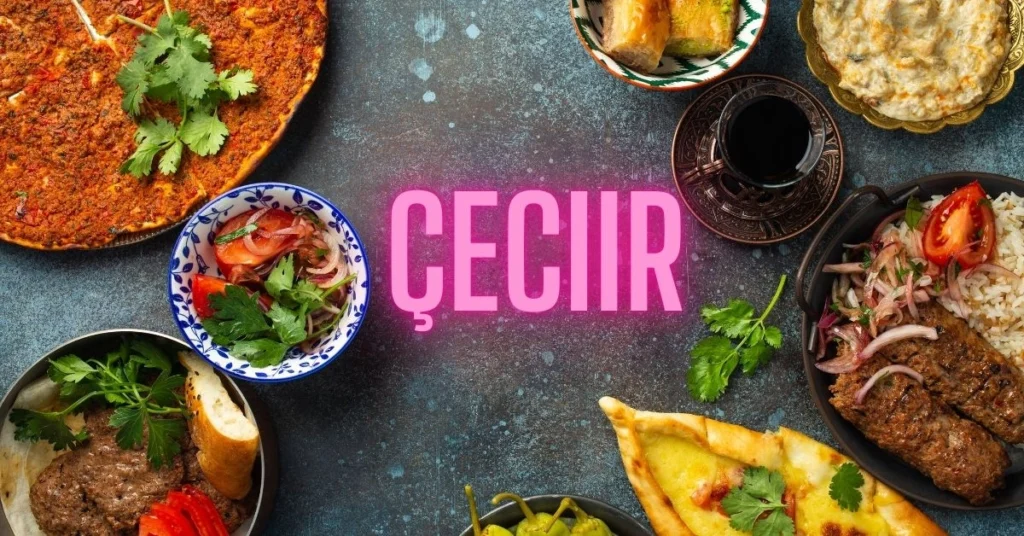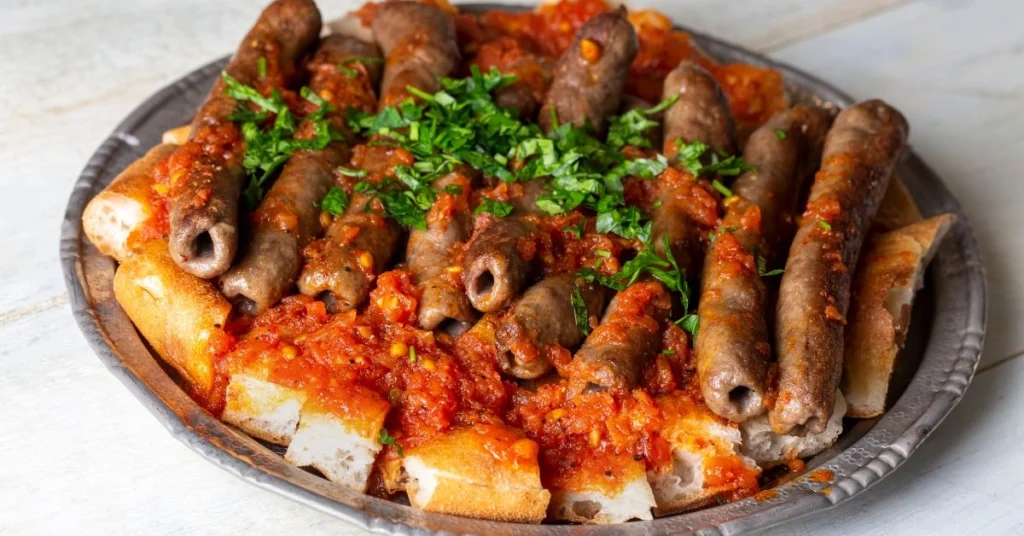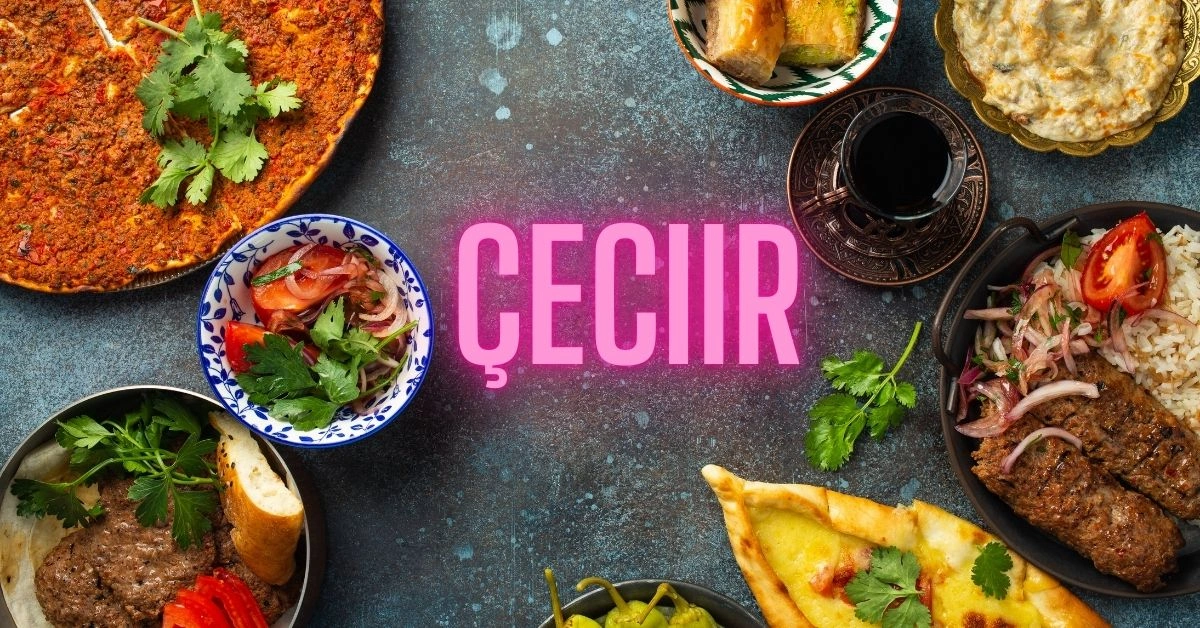Rediscovering Çeciir: A Forgotten Turkish Delight
Çeciir is a traditional Turkish dessert that holds deep roots in Turkish food culture. Unlike popular Turkish sweet dishes such as baklava and Turkish delight, this delicacy has remained lesser-known. However, it is an important part of Turkish heritage food and deserves recognition.
This ancient Turkish dessert was once a staple in Ottoman cuisine desserts and Anatolian households. It was crafted using simple, homemade Turkish sweets techniques that have been passed down for generations. Over time, modern sweets replaced many forgotten Turkish dishes, pushing Çeciir into obscurity.
What makes this Turkish grain-based dessert unique is its wholesome, natural ingredients. Typically, it is made with grains, nuts, and Turkish molasses desserts like grape or date syrup. Unlike highly processed sweets, it retains a rich, authentic flavor.
Recently, food historians and chefs have started reviving old Ottoman recipes like this one. With the growing interest in traditional Anatolian sweets, many people are rediscovering the flavors of the past. This blog will explore its history, preparation, and variations, ensuring that this authentic Turkish recipe is never forgotten.
| Aspect | Details | Figures |
|---|
| Name Origin | Çeciir is believed to have come from an old Anatolian dialect or Ottoman cuisine. | – |
| Historical Roots | Originates from Anatolia and was a staple in Ottoman cuisine. | Popular in royal palaces during the Ottoman era. |
| Ingredients | Grains (wheat, chickpeas), nuts (walnuts, almonds), Turkish molasses, honey. | Key ingredients: wheat, chickpeas, walnuts, almonds. |
| Main Sweeteners | Turkish molasses (pekmez), honey, date syrup. | Molasses, honey, date syrup. |
| Preparation | Roasting or boiling grains, mixing with sweeteners, and adding nuts/spices. | Handcrafted, slow preparation method. |
| Common Mistakes | Using poor-quality ingredients, overcooking. | Fresh ingredients like organic honey are ideal. |
| Traditional Cooking Techniques | Grains are roasted/boiled; spices like cinnamon or cardamom may be added. | – |
| Dietary Adaptations | Gluten-free, vegan versions possible with substitutions. | Rice flour, quinoa, maple syrup for substitutions. |
| Health Benefits | Rich in grains and nuts, provides fiber, protein, and essential nutrients. | Healthy, nutrient-rich dessert. |
| Serving Suggestions | As a topping for yogurt, part of Turkish coffee pairings, or bite-sized pieces. | – |
| Comparison with Other Turkish Sweets | Simpler than baklava, more earthy sweetness compared to Turkish delight. | – |
| Modern Variations | Fusion versions with citrus zest, chocolate, or superfoods like chia seeds. | – |
| Revival Efforts | Chefs and food historians are reviving this dish through food blogging. | – |
The History and Origins of This Traditional Turkish Dessert

The Meaning and Origins of the Name
The term “Çeciir” is not commonly found in Turkish confectionery history. Some believe it comes from an old Anatolian dialect, while others link it to Ottoman cuisine desserts. The name may have evolved over time, much like other Turkish heritage food.
A Dish from Ancient Anatolia
This traditional Turkish dessert is believed to have originated in the heart of Anatolia. Early communities used local grains, nuts, and honey to make homemade Turkish sweets. The dish evolved as a simple, nutritious treat that was easy to prepare.
Its Role in Ottoman Cuisine
During the Ottoman era, many old Ottoman recipes featured Turkish nuts and grains desserts. This dish, with its balance of natural sweetness and texture, was a popular choice. Some records mention similar sweets being served in royal palaces.
Regional Variations Across Turkey
Different regions of Turkey have their own versions of this forgotten Turkish dish. Some use Turkish molasses desserts like pekmez (grape molasses), while others prefer honey. The grains and nuts also vary based on local ingredients.
Why It Became Less Popular
With industrialization, many traditional Anatolian sweets were replaced by mass-produced alternatives. The popularity of best Turkish sweets like baklava and lokum overshadowed simpler treats. As a result, fewer people continued making this dish at home.
Efforts to Revive This Traditional Turkish Dessert
Recently, chefs and food historians have been working to restore forgotten Turkish dishes. With the rise of food blogging, many are now sharing authentic Turkish recipes online. This has helped people reconnect with Turkish confectionery history.
Ingredients and Traditional Preparation Method

Key Ingredients Used
This homemade Turkish sweet requires only a few simple ingredients. The base often includes grains like wheat or chickpeas, along with Turkish nuts and grains desserts components like walnuts or almonds. The sweetness comes from Turkish molasses desserts, honey, or date syrup.
Some variations include Turkish coffee and dessert pairings by adding spices like cinnamon or cardamom. The balance of flavors creates a unique Turkish dessert with a rich, satisfying taste.
Traditional Cooking Techniques
The grains are either roasted or boiled before being mixed with sweeteners. This allows the flavors to deepen, making it stand out among other Turkish sweet recipes. Nuts and spices are then added to enhance the texture.
The Role of Handcrafting in Making It
Like most authentic Turkish recipes, this dish relies on handcrafting. Families pass down their techniques to maintain the original taste. Unlike industrial sweets, this Turkish grain-based dessert is made with patience and care.
Common Mistakes and How to Avoid Them
Using poor-quality ingredients can ruin the dish. It’s best to use fresh, best Turkish sweets ingredients like organic honey and locally sourced grains. Overcooking can also make the texture too hard or dry.
Why Traditional Preparation Matters
Following old Ottoman recipes helps preserve Turkish food culture. Making it the traditional way connects people to their roots. This is why chefs and home cooks continue to revive it.
Modern Interpretations and Variations

How Chefs Are Reinventing It
Modern chefs are experimenting with this forgotten Turkish dish by adding new flavors. Some incorporate citrus zest, while others mix it with chocolate for a fusion version. These updates make it more appealing to younger generations.
Healthier Versions
This ancient Turkish dessert is naturally healthy, but some prefer lighter variations. Replacing honey with agave or date syrup can reduce sugar content. Adding superfoods like chia seeds can boost its nutritional value.
Dietary Adaptations (Vegan & Gluten-Free Options)
A gluten-free Turkish sweet version can be made using rice flour or quinoa instead of wheat. For a vegan Turkish dessert, honey can be swapped with maple syrup. These adaptations allow more people to enjoy it.
Serving This Turkish Sweet in Creative Ways
This unique Turkish dessert can be served in many ways. Some people enjoy it as a topping for yogurt or as part of a Turkish coffee and dessert pairing. Others shape it into bite-sized pieces for an easy-to-eat treat.
How It Compares to Other Turkish Desserts
Unlike best Turkish sweets like baklava, this dish does not require layers of pastry. It is simpler to prepare and uses natural ingredients. Compared to lokum (Turkish delight), it has a more subtle, earthy sweetness.
Conclusion
This ancient Turkish dessert, though lesser-known compared to its more famous counterparts, is a beautiful testament to the simplicity and richness of traditional Turkish cuisine. Made with wholesome ingredients like grains, nuts, and natural sweeteners such as molasses or honey, it offers a unique, earthy sweetness that has endured through centuries. Its origins trace back to the heart of Anatolia and the Ottoman Empire, where it was cherished by both commoners and royalty.
Though overshadowed by more popular sweets, there is a growing movement to revive this dish, with modern chefs experimenting with new flavors and healthier versions. Whether enjoyed in its traditional form or with creative twists, this dessert is a reminder of the deep cultural and culinary heritage of Turkey. Preserving such recipes not only helps us connect to the past but also ensures the continued appreciation of authentic, handcrafted sweets in a world of mass production.
What is the main ingredient in this Turkish dessert?
The main ingredients are grains such as wheat or chickpeas, along with nuts like walnuts or almonds. The sweetness comes from natural sweeteners like Turkish molasses, honey, or date syrup.
Is this dessert healthy?
Yes! This dessert is naturally healthy, especially when made with fresh, organic ingredients. It’s rich in grains and nuts, providing fiber, protein, and essential nutrients.
Can I make a gluten-free version of this dessert?
Absolutely! A gluten-free version can be made by substituting wheat with rice flour, quinoa, or other gluten-free grains.
How can I make this dessert healthier?
You can replace honey with agave or date syrup to lower the sugar content. Additionally, adding superfoods like chia seeds or flax seeds can enhance its nutritional value.
How is this dessert different from other Turkish sweets like baklava or Turkish delight?
This dessert is simpler, made from natural ingredients without the need for layers of pastry. It offers a more subtle, earthy sweetness compared to the rich, sugary flavors of baklava or the gelatinous texture of Turkish delight.
What are some creative ways to serve this dessert?
You can serve it as a topping for yogurt, mix it into a Turkish coffee and dessert pairing, or shape it into bite-sized pieces for an easy-to-eat treat.
Can I make a vegan version of this dessert?
Yes, you can make a vegan version by substituting honey with maple syrup or agave nectar. This keeps the dish plant-based while maintaining its authentic flavor.







